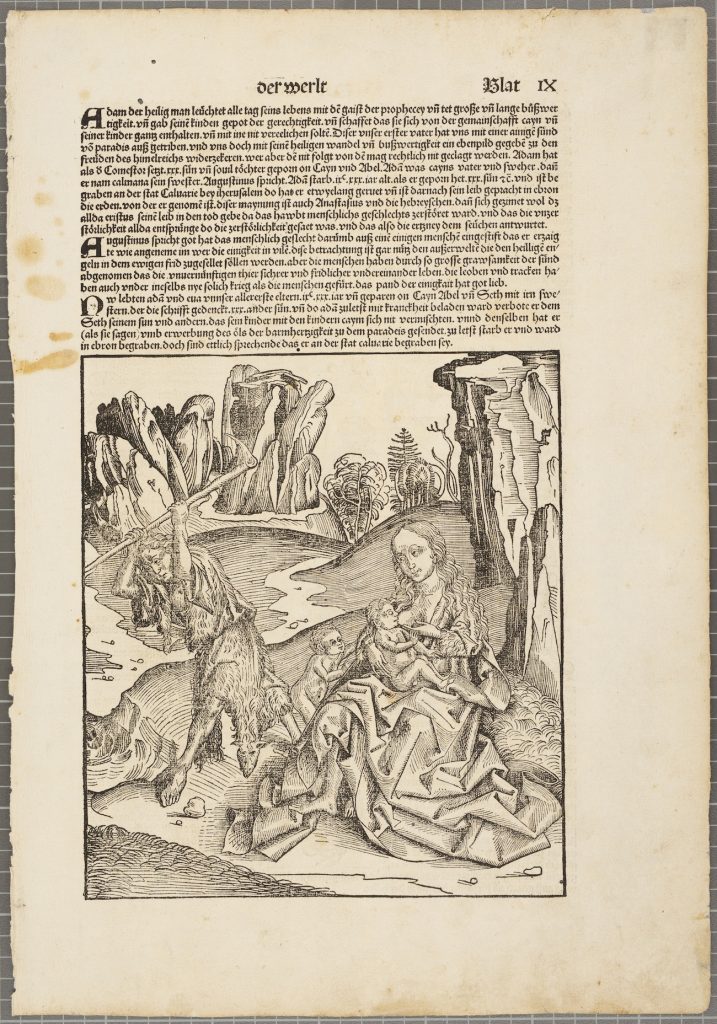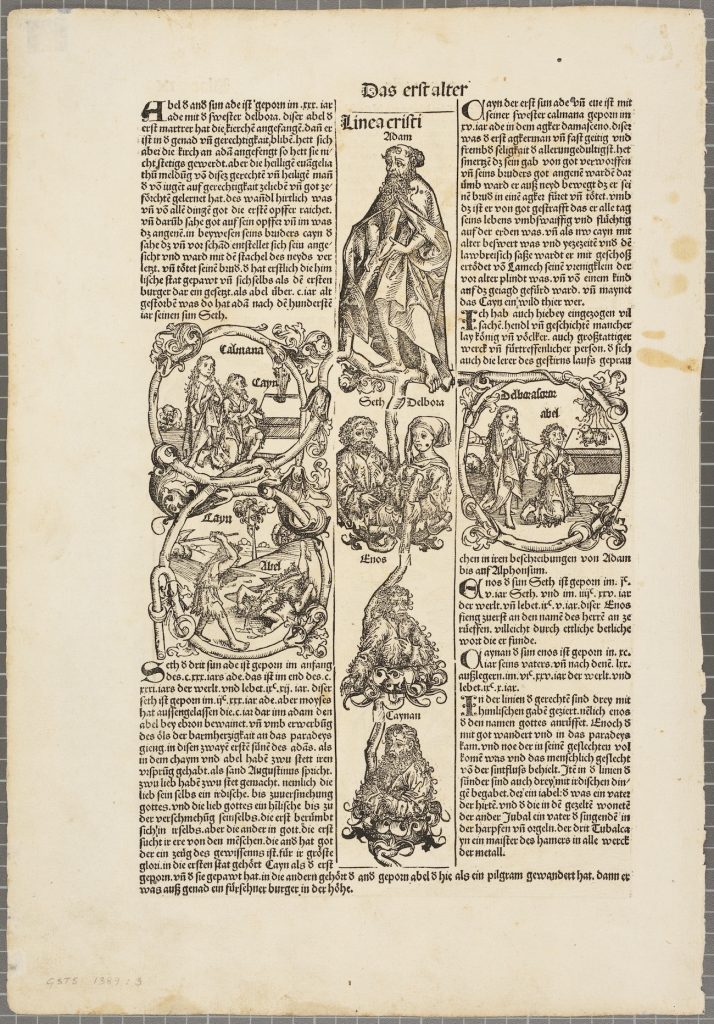A rare leaf of a book from early days of printing
MAY 2023
In 2011, Gösta Serlachius Fine Arts Foundation was able to receive a significant donation from Collection Kivijärvi. It was sculptor Harry Kivijärvi’s (1931–2010) art collection, which in addition to his owns works also includes an art collection amassed by him. It included a text or graphic print from early decades of printing history, the cataloguing information of which was clear:
Wolgemut, Michael (uncertain), illustration for Schedel’s Nurenberg Chronicle, watermark on paper: A Koberger, Nuremberg 1493. Religion; Adam; Eve; Christ
The paper was clearly a folio-sized leaf of a book, with pagination IX. The leaf combined text section and an illustration of Adam and Eve after their expulsion from Paradise executed in wood cut. On the other hand, the reverse side, in a form of a family tree, depicted figures from the Old Testament starting from Adam. However, it was rather easy to recognise the object as a small part of the illustrious Latin Nuremberg Chronicle whose name originally was Liber Chronicarum.
The chronicle is a so-called incunable, that is it was printed soon after the invention of the art printing before the year 1500, in this case in 1493. For the first time, the chronicle successfully combined rich and high-quality illustrations to support the text. It was fascinating to recognise an object that was unexpectedly different from the rest of the art collection, a part of early history of printing.
It is an illustrated world history book whose author was Nuremberg humanist Hartmann Schedel (1440–1514). In his principal work, he open-mindedly combines tradition, legends, religion and fact into a potpourri which aims to combine theological historiography with contemporary humanistic insights and awakening empiricism. In his texts, the writer quotes unabashedly the ancient and medieval authors.
According to estimates, only one tenth of the text may be the writer’s independent unquoted narration. Besides world history, the chronicle focuses on presenting villages and towns from Europe and the Middle East with topographic images and texts. There are two actual maps: a map of the whole world and of Central and Northern Europe.
The book comprises more than 600 pages. The blocks for the wood cut of some 1800 illustrations were carved in the studios of Michael Wolgemut and Wilhelm Pleydenwurff. The printing itself was carried out by Anton Koberger, whose printing house was in its time the largest in the German world.
The text with its images has been printed on a slightly yellowed but however high-quality and beautiful rag paper. Typically, printing of images has caused the paper to stretch and ripple slightly. Waterlines stand out on the paper, that is, at the manufacturing stage, the traces left by the wires of the screen on the damp paper pulp. In the middle also a watermark, perhaps a crown, is visible. The size of the sheet is 47.3 x 32.3 cm, which is indicative of a large and valuable binding. After printing, some leaves were given to local artists for colouring. However, this piece is monochromatic.
A period of little over 500 years has left only minor damages. Due to handling, the edges of the paper have accumulated some stains, small tears and abrasion. At few points the larva had tried to taste the paper, but probably found that it had enjoyed some delicious meals elsewhere. At some point, someone has had the idea to attach pieces of plastic adhesive tape, now already yellowed, on the paper.
As conservation measure, the paper was dry cleaned and washed in a water bath which removed some dirt from it and the yellow colour created as a by-product of acidity. As aging factors caused by dirt and acidity are washed out from the paper, its lifetime increases, and aesthetic appearance improves. The adhesive tapes were removed mechanically, and small tears were repaired with wheat starch paste and long-fiber Japanese paper.
It is estimated there are about 1 200 copies of Liber Chronicarum left. Over time, illustrated books and manuscripts have been torn up and sold as loose leaves in the hope of profit. The leaf of the book in question was reportedly acquired from the Nordic Antiquarian in Helsinki in 1971.
Anna Aaltonen
Book and paper conservator



